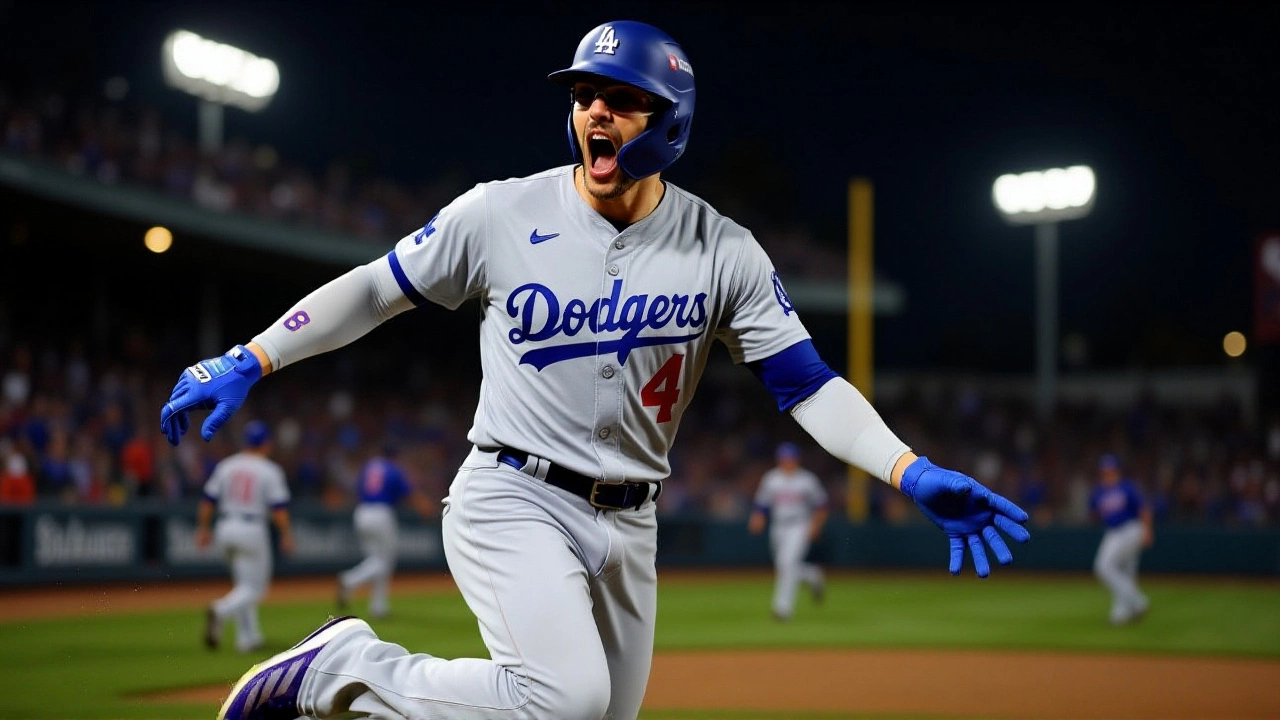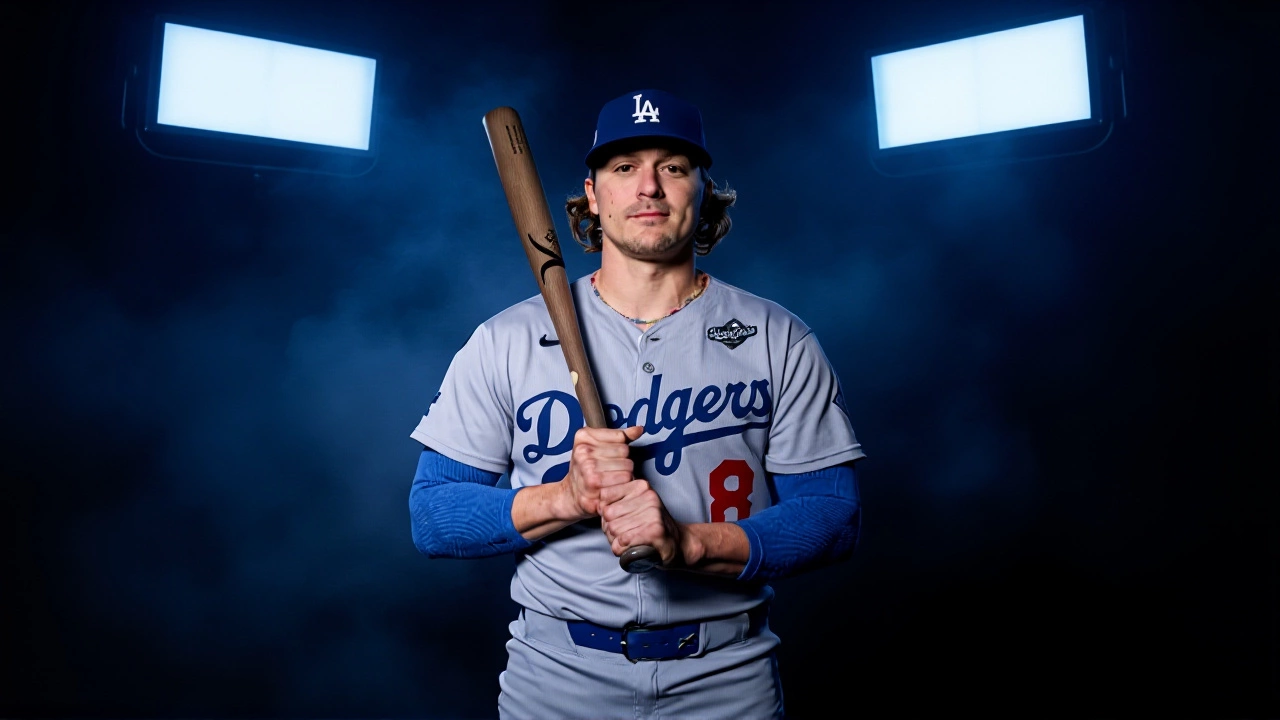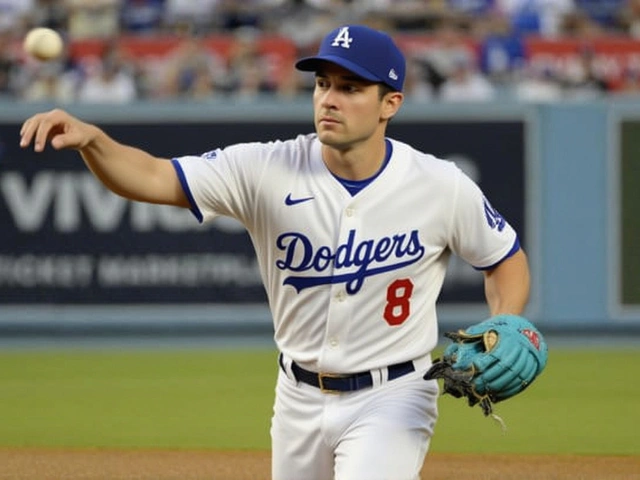When Kiké Hernández stepped onto the field at Dodger Stadium on August 26, 2025, his two hits in a 6-3 win over the Cincinnati Reds weren’t just statistics—they were a statement. After playing through pain for over a month, enduring an MRI that revealed delayed damage, and spending six weeks rehabbing in Oklahoma City, the 34-year-old utility man was back where he said he wanted to be: in the heart of a team chasing history. The Los Angeles Dodgers, tied with the San Diego Padres for first in the National League West as of August 25, 2025, didn’t just get a hitter back—they got their October insurance policy.
"I Played Till I Couldn’t Hold the Bat"
Kiké Hernández didn’t just suffer an injury in July 2025—he fought it. For more than a month, he masked the swelling in his left elbow, refusing to acknowledge how badly it was affecting his swing. "I played till, basically, I felt like I couldn’t even hold the bat anymore," he told MLB.com on August 25, 2025. That admission wasn’t just humility; it was a window into his identity. He’s the kind of player who’d rather risk long-term damage than short-term bench time. By the time the Dodgers’ medical team, led by Dr. Neal ElAttrache at the Kerlan-Jobe Orthopaedic Clinic, confirmed the inflammation, the damage had deepened. He’d already played 72 games that season with a .195 average and 22 RBIs—far below his usual standard, but still vital in a lineup that was crumbling under injuries to Corey Seager, Justin Turner, and Clayton Kershaw.
A Free Agent Who Chose Loyalty
It’s rare these days for a player to openly say his first choice is re-signing with the same team. But that’s exactly what Hernández did on HBO’s The Shop on November 26, 2024. "Main priority for me would probably be coming back," he said, pointing to the Dodgers’ chance to become the first back-to-back champions since the 1999–2000 Yankees. That wasn’t just talk. He’d already done it once—traded from Boston to LA in August 2023 after a 2-year, $14 million deal with the Red Sox, then signed a one-year, $4 million extension in February 2024. He wasn’t chasing a bigger contract. He was chasing legacy. And now, with the Dodgers holding a 78-54 record and playoff seeding on the line, his return wasn’t just welcome—it was essential.

Rehab, Roster Moves, and the Brace That Became a Badge
His rehab with the Oklahoma City Baseball Club was a quiet success: five games, a .357 average, two doubles, three RBIs, and versatility across third base, left, and center field. When activated on August 25, the Dodgers moved infielder Buddy Kennedy to make room. Hernández didn’t wear his protective sleeve as a sign of weakness—he wore it like armor. "Hopefully, the brace is going to make me like Shohei," he joked, referencing superstar Shohei Ohtani. The line got a laugh, but the truth was deeper: he was adapting, not declining. At 34, he’s not the same athlete he was in 2021, but his baseball IQ, his clutch hitting, and his ability to fill any role make him irreplaceable.
Why This Matters Beyond the Box Score
The Dodgers’ front office, led by Stan Kasten and owned by Guggenheim Baseball Management LLC, has spent years building a machine. But machines break. Injuries to Seager, Turner, and Kershaw exposed cracks. Teoscar Hernández’s shaky defense in right field made Kiké’s ability to play all three outfield spots more valuable than ever. His return didn’t just boost the lineup—it stabilized the entire roster. Manager Dave Roberts, who’s led the team since 2016, had been optimistic since his August 12 press conference, saying Hernández would return before September 30. He was right. And now, with the Wild Card Series looming, the Dodgers have a player who’s been there before—nine postseason appearances with LA, one with Boston, and a reputation for rising when the pressure peaks.

What Comes Next?
The regular season ends on September 30, but the real test begins October 1. If the Dodgers secure home-field advantage, Hernández’s bat and versatility will be critical against power-hitting teams like the Mets or Braves. If they’re forced into a Wild Card game, his ability to pinch-hit, play defense anywhere, and stay calm under chaos could be the difference. His contract expires after 2025. Will he re-sign? He hasn’t said. But if the Dodgers win it all, you can bet he’ll be back—whether they offer him a deal or not. This isn’t just about baseball. It’s about belonging.
Frequently Asked Questions
Why did Kiké Hernández wait so long to go on the injured list?
Hernández has a long-standing reputation for playing through pain, believing his presence on the field helps the team even when he’s not at his best. He admitted to MLB.com that he played through elbow inflammation for over a month because he "felt like he could still play." By the time he finally sought an MRI, the condition had worsened, requiring a longer recovery. This mindset has defined his career but also raises questions about player health management.
How does Hernández’s return impact the Dodgers’ playoff chances?
With the Dodgers tied for first in the National League West and key players like Seager and Turner sidelined, Hernández’s ability to play multiple positions and deliver in high-leverage situations provides critical depth. His .357 average in rehab games and immediate two-hit performance upon return show he’s still a threat at the plate. His postseason experience—10 appearances, nine with LA—makes him invaluable in October, where clutch hitting often decides championships.
Is Kiké Hernández likely to re-sign with the Dodgers after 2025?
While Hernández hasn’t confirmed future plans, his actions speak loudly: he prioritized returning to LA during free agency in 2024 and has repeatedly expressed loyalty to the organization. If the Dodgers win the World Series this year, a return on a short-term deal—even at a reduced rate—is highly plausible. He’s built his legacy here, and at 34, he may value winning over money.
What role does Hernández play that makes him irreplaceable?
Few players in MLB can reliably play all three outfield positions and multiple infield spots at a high level. Hernández fills gaps created by injuries and matchups, giving manager Dave Roberts flexibility to rest starters or adjust defensively late in games. His bat may not be elite, but his on-base skills and ability to hit in pressure situations—especially in the postseason—make him a strategic linchpin, not just a bench player.
How does Hernández’s injury compare to other Dodgers’ injuries in 2025?
Unlike the season-ending injuries to Seager and Kershaw, Hernández’s elbow inflammation was manageable with rest and rehab, allowing his return before the postseason. While Seager’s hamstring strain and Kershaw’s shoulder fatigue required longer recovery windows, Hernández’s case was a classic example of a player pushing too hard—resulting in a delayed but ultimately successful comeback. His return contrasts sharply with the team’s other long-term absences, making his impact even more crucial.
What’s the significance of Hernández comparing his brace to Shohei Ohtani’s?
By joking that his brace would make him "like Shohei," Hernández was referencing Ohtani’s iconic elbow brace and his own dual-threat dominance. It was both a nod to his teammate’s resilience and a subtle way of saying he’s still competitive despite age and injury. The comment reflects the team culture—where players support each other through adversity—and shows Hernández’s self-awareness and humor, traits that endear him to fans and teammates alike.

Write a comment